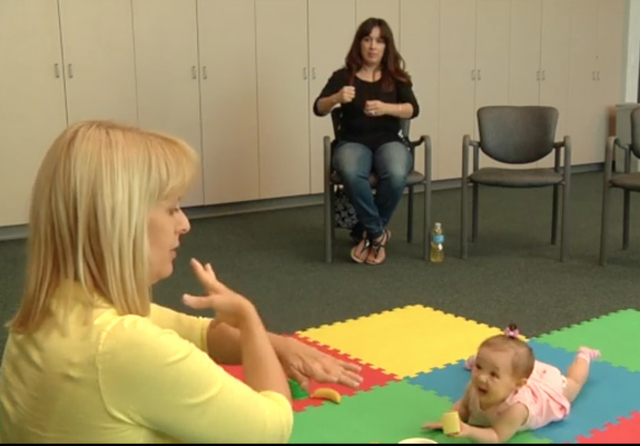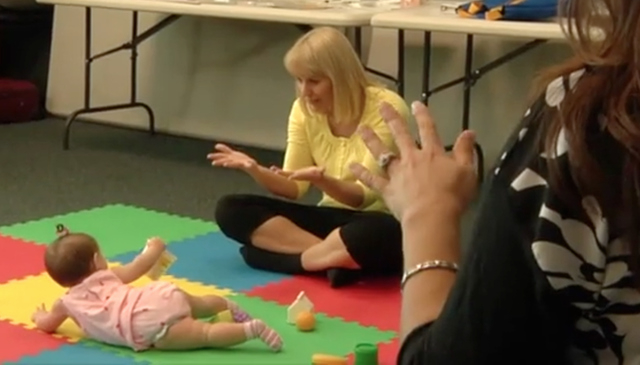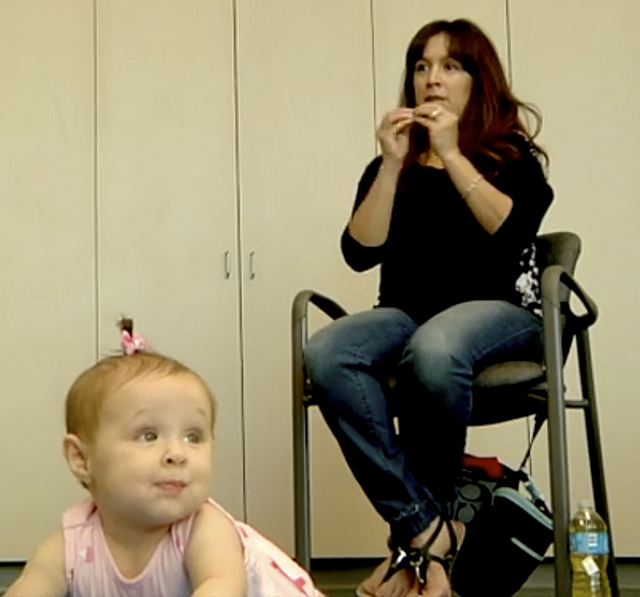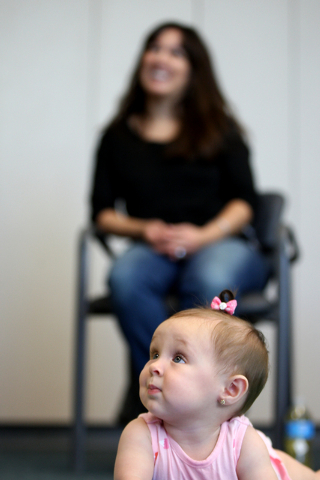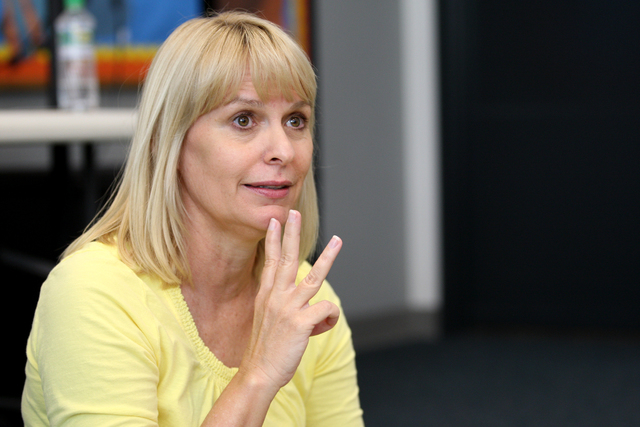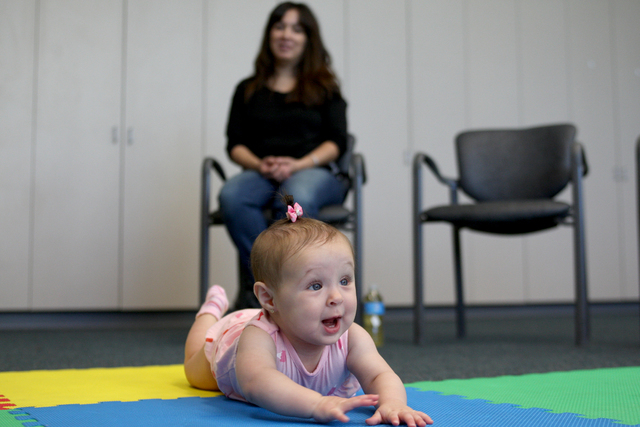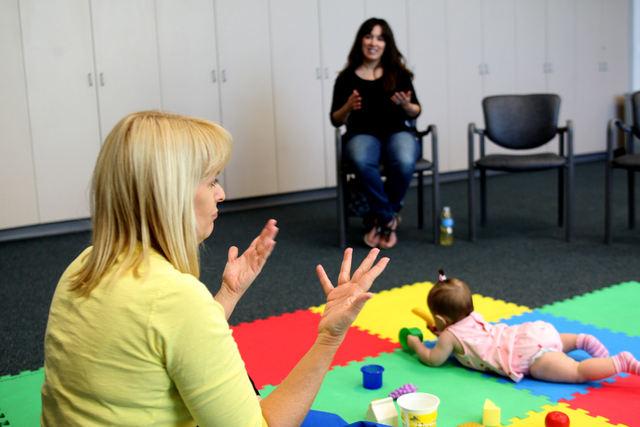Baby talk: Classes give infants the power of sign language
Shannon Osborne began conversing with her son, Elijah, when he was still crawling. That was 15 years ago. Now, she teaches other parents how to communicate with their child through sign language.
Osborne, a language specialist, is the owner of Wee Can Sign. Its workshops teach parents the signs most pertinent to babies’ lives, such as those for “milk,” “dirty diaper” and “cracker.”
The workshop is scheduled from 10:30 a.m. to noon on the third Wednesday of the month at the Summerlin Hospital Medical Office Building, 653 N. Town Center Drive, Tower 1, in the ground-floor conference room. There is no class in December.
Osborne also teaches a weekly class series at the Greenspun WomensCare Center at 2651 Paseo Verde Parkway and at 7220 S. Cimarron Road. Those classes meet for an hour each week for four weeks. The fee is $80 per family and includes a “Sign with Your Baby” training DVD.
The 90-minute class uses American Sign Language gestures and is geared toward parents, expectant parents, grandparents and children from newborn to 12 months. By the end of each session, more than 40 signs have been introduced.
“I love it,” Osborne said of giving the workshops. “I get to play with babies, sing silly songs and help parents become less frustrated (and) be better parents.”
She said that by the time a baby is 10 or 11 months old, he can start copying gestures. She said Elijah was signing at 10 months, within four weeks of starting classes. His initial words were “more,” “ball,” “baby” and “all done.” By 12 months, he could signal “change” when he needed a fresh diaper. Other words were added as he grew.
Courtney Francis’ daughter, Adelina Pacheco, is 3 months old. Francis said she signed up for Wee Can Sign because it “would help a lot with her because she has colic, so it’s hard to know what’s wrong with her. I’ve just heard a lot of good things about (the classes).”
Francis said she and her husband, Davis Pacheco, were mainly concerned with learning where Adelina hurt so they could better understand what was making her scream.
“It could be a number of different things,” she said. “We don’t know if she has reflux, or if she’s teething, or if she just doesn’t feel good. … It’s stressful not to know (what the problem is). It makes me cry.”
Adriana Riegelsberger brought her 8-month-old daughter Kate to the workshop. Kate is her first child.
“She gets fussy,” Riegelsberger said. “She screams, and she makes this (frustrated face). I have no idea why. She clenches her fists and looks at me like, ‘Don’t you get it?’ ”
Osborne said that at about 6 months, the child realizes he can make his hands do things intentionally. Clapping is a signal that the baby is ready to learn signs.
Don’t expect instant understanding. Repetition is key. Generally, a few weeks go by before the child makes the connection, said Osborne, “then you’ll see the light bulb go on.”
Osborne said “kitty cat,” unconsciously making a sign like pulling on whiskers coming from the side of her mouth. “(The baby thinks) ‘Kitty cat? Oh, she means this fuzzy thing. This must be a kitty cat.’ “
From that realization, other signs are grasped quickly, Osborne said.
Signs are added as the baby becomes more aware of his world. Airplane, for example, is pretty much pointing skyward.
Before the movie “Meet the Fockers” came out in 2004, the studio contacted Osborne because it needed to use sign language in the movie.
“So, I have all these funny emails going back and forth on how to sign ‘poop.’ It’s so hard to describe how to sign it. ‘Milk’ is like milking a cow, and ‘poo’ is like it’s coming out,” Osborne said.
Osborne said that learning sign language as a baby does not lead to delayed talking. Like singing, signing with a toddler provides stimulation for multiple areas of the brain.
“All the evidence seems to show that when you sign with young babies, they tend to speak more and at an earlier age,” Osborne said. “But every child is different, and you can’t predict when they’re going to speak. But if they can communicate with signs, then we know they understand, and that’s half the battle.”
Sign language came into play for Osborne when she experienced a transient ischemic attack (TIA) episode, which is similar to a stroke, about 10 years ago and instantly lost her ability to speak.
“But I could sign,” she said. “So, I knew which area of the brain was affected.”
Unfortunately, the emergency room nurses did not understand sign language.
“It was a taste of what it’s like, not to be able to communicate,” Osborne said.
Osborne also offers Sing and Sign workshops for those who have taken Wee Can Sign.
The cost for each workshop in Summerlin is $12 per family. To register, call 702-233-7103 and request a reservation for FamilyPlace classes. For more information, visit tinyurl.com/weecansign or weecansign.com.
Contact Summerlin Area View reporter Jan Hogan at jhogan@viewnews.com or 702-387-2949.



